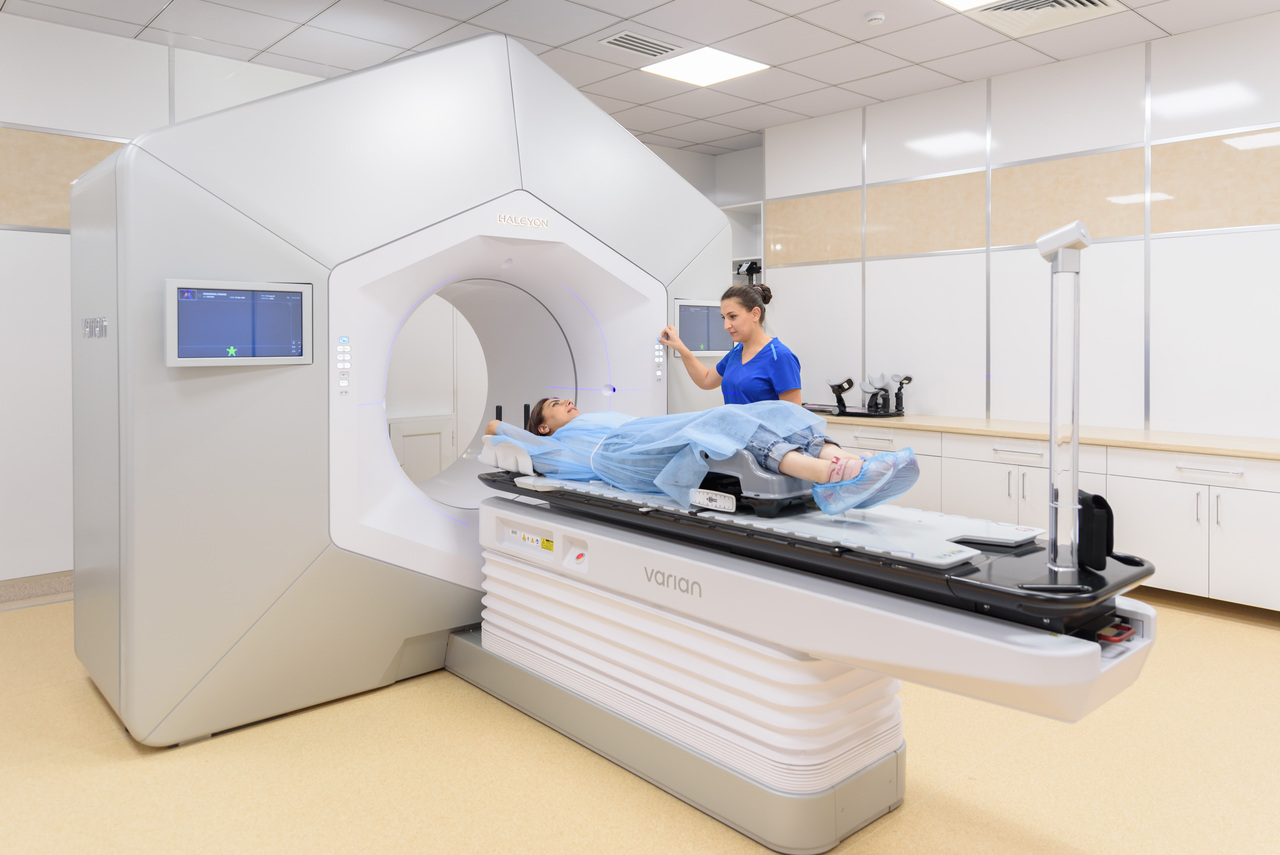Radiation Therapy for Breast Cancer
One of the stages of breast cancer treatment is radiation therapy, which is usually performed after surgery and drug treatment. It is a crucial step aimed at destroying tumor cells and preventing disease recurrence.
What is Radiation Therapy?
Radiation therapy uses ionizing radiation to target tumor cells and destroy them. It is primarily applied in cases where breast-conserving surgery (i.e., the breast is not entirely removed) has been performed. Additionally, it is used after mastectomy (complete removal of the breast), especially in later stages of the disease.
Treatment Planning
Before starting radiation therapy, CT topometry is performed to develop a treatment plan based on the obtained images. This process includes outlining the target area (breast) and adjacent healthy tissues—lungs, heart, spinal cord—and calculating the radiation dose.
The main goal of planning is to accurately determine the necessary radiation dose for the tumor area while protecting surrounding healthy tissues. The planning phase takes about a week, after which treatment begins.
Treatment Process
The number of radiation therapy sessions depends on the stage of the disease and the extent of prior surgery but typically ranges from 16 to 20 sessions, conducted daily.
A five-day schedule (Monday to Friday) is the international standard, with a break on weekends (Saturday and Sunday) to allow healthy tissues to recover.
Each session lasts 10-15 minutes, with actual radiation exposure taking only 1-2 minutes, while the rest of the time is spent on proper patient positioning.

Modern Technologies
At the "Erebuni" Radiotherapy Center, breast irradiation is performed during the deep inspiration phase when the patient holds their breath. This method helps reduce radiation exposure to the heart and lungs. Studies have shown that previous methods led to cardiac complications in some patients due to radiation exposure to the heart.
With deep inspiration technology, the heart's position shifts away from the breast, reducing radiation exposure to this organ. Additionally, lung volume increases, further minimizing radiation effects.
Side Effects and Prevention
Modern technologies help reduce the likelihood of side effects. Some patients may experience mild skin redness, which can be alleviated with proper care.
Additionally, when lymph nodes are irradiated, mild laryngitis symptoms may occur, which are managed by the treating physician with appropriate guidance. These side effects are not dangerous and completely resolve within 2-3 weeks after treatment ends.
Quality of Life During Treatment
The radiation therapy process at the "Erebuni" Radiotherapy Center, performed using modern accelerators, does not cause discomfort. Unlike chemotherapy, it is not associated with weakness or nausea.
During radiation therapy, patients can maintain their daily routines, and after completing treatment, they can fully recover without long-term complications. They pose no risk to others and can continue interacting with their loved ones.
Radiation therapy for breast cancer is a crucial stage that significantly enhances treatment effectiveness. At the "Erebuni" Radiotherapy Center, internationally standardized technologies ensure treatment safety and high efficiency, reducing potential complications and improving patients' quality of life.

